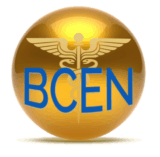Most U.S. nursing schools require students to write course assignment papers, theses, and dissertations in APA Style—the writing style specified by the American Psychological Association. The core reference for APA Style is Publication Manual of the American Psychological Association, Sixth Edition (PMAPA). PMAPA is available in two versions: a first printing, which contains numerous errors, and a second, corrected printing (all versions printed after October 2009). All PMAPA printings beginning from October 2009 (or more recent) are of the corrected version.
Note: I do not recommend the so-called Concise Rules of APA Style published by the APA. Concise Rules is a bit more expensive and less useful than the PMAPA. The rules content of the Concise Rules is word-for-word identical to Chapters 2-7 of the PMAPA—the same rules, subrules, explanations, and examples appear in both books. In other words, the Concise Rules is not more “concise”; it does not present fewer rules and/or subrules). The main difference between Concise Rules and the PMAPA is that Concise Rules does not contain the PMAPA‘s Chapter 1 (Writing for the Behavioral and Social Sciences), Chapter 2 (Manuscript Structure and Content), and Chapter 8 (The Publication Process). Chapters 1 and 2 contain subsections that are useful for all nurse authors (e.g., nursing students, researchers, and other scholars); Chapter 8 contains subsections that are useful for nurse authors who intend to publish a paper. In addition, Concise Rules does not contain the display pages of sample papers that are included in the PMAPA (pages 41–59); many authors find these sample pages quite helpful.
Useful Websites
- APA Style: Official American Psychological Association site; includes FAQs about APA Style that are not discussed in the PMAPA
- APA Formatting and Style Guide (OWL Purdue Online Writing Lab) Note: If you do not have immediate access to the PMAPA, this OWL resource may be helpful. However, if you wish to learn APA Style, I strongly recommend that you purchase the PMAPA—and engage with the book frequently and actively. Highlight key words and phrases, write notes in the margins, use post-its to create page tabs for quick access. Frequent, active engagement with your copy of the PMAPA will help you to learn APA Style’s writing rules more quickly and more thoroughly—and to retain your learning over time.
Citation Software
- Endnote
- Reference Point
- StyleEase
- Paper
- Microsoft Office APA
- PERRLA
- WriteCite
Typing Software – Free Downloads
Note: I have not used the typing software listed below. If you decide to use any of these programs, I’d appreciate hearing your feedback on your experience.
- KeyBlaze Typing Tutor
- Mavis Beacon Teaches Typing 17 Deluxe
- Rapid Typing Zone
APA Style References
- Mastering APA Style—Student’s Workbook and Training Guide, Sixth Edition, by the American Psychological Association.
- Online tutorial: The Basics of APA Style. For those with little or no previous knowledge of APA style.
- Online tutorial: Mastering the Sixth Edition; for those with previous knowledge of APA style; at www.apastyle.org/learn/courses/4210700.aspx.
- Note: The book Concise Rules of APA Style is a bit more expensive and generally less useful than the Publication Manual of the American Psychological Association (PMAPA). The rules contents of the Concise Rules are word-for-word identical to the Publication Manual—with the same rules, subrules, explanations, and examples in both books (i.e., Concise Rules does not have fewer rules and/or subrules). Also, Concise Rules does not contain Chapters 1, 2, and 8 of PMAPA—chapters that are useful to a nursing professional who intends to publish papers. In addition, Concise Rules does not contain the display pages of sample papers that are included in PMAPA (pages 41–59); many authors find these sample pages quite helpful.
Other Academic Writing Reference Books
- Academic Writing for Graduate Students—Essential Tasks and Skills, Second Edition, by John M. Swales and Christine B. Feak. Ann Arbor, Michigan: The University of Michigan Press. ($17.24)
- Anatomy of Writing for Publication for Nurses, by Cynthia Saver. (2011). Published by Sigma Theta Tau International Honor Society of Nursing. ($31.45)
- The Bluebook, A Uniform System of Citation, 19th Edition. By Columbia Law Review, Harvard Law Review, University of Pennsylvania Law Review. (2005). Cambridge, Massachusetts: Harvard Law Review Association. ($169.87)
- Essentials of Writing Biomedical Research Papers, Second Edition, by Mimi Zeiger. ($51.11)
- From Research to Manuscript, Second Edition, by Michael Jay Katz. ($17.78)
- How to Read a Paper—The Basics of Evidence-based Medicine, Fourth Edition. By Trisha Greenhalgh. London: Wiley–Blackwell. ($40.45)
- Presenting Your Findings: A Practical Guide for Creating Tables – Adelheid A. M. Nicol and Penny M. Pexman. (1999). Washington, D.C.: American Psychological Association. ($4.71)
Dissertation Reference Books
The following dissertation composition references are recommended by staff at the American Psychological Association.
- Dissertations and Theses From Start to Finish: Psychology and Related Fields (2nd ed., 2006), by John D. Cone and Sharon L. Foster.
- Finish Your Dissertation Once and for All! How to Overcome Psychological Barriers, Get Results, and Move on With Your Life (2008), by Alison B. Miller.
- How to Write a Lot: A Practical Guide to Productive Academic Writing (2007), by Paul J. Silvia.
Word Usage References
- Merriam–Webster’s Dictionary of English Usage, by Merriam–Webster, Inc. (1994). Springfield, MA: Author. ($19.95)
- Fowler’s Modern English Usage, by R. W. Burchfield. New York: Oxford University Press. ($25.95)
- Garner’s Modern American Usage, Third Edition, by Bryan Garner. (2009). Oxford: Oxford University Press. ($29.70)
- Garner’s Usage Tip of the Day. A good FREE resource for building vocabulary, delivered daily to your email address
General Purpose Writing Reference Books
You may find the following references useful for general writing purposes:
- The Sense of Structure: Writing from the Reader’s Perspective, by George D. Gopen. (2004). New York: Pearson Longman. ($62.49)
- The Chicago Manual of Style, Sixteenth Edition, by University of Chicago Press Staff. (2010). Chicago: University of Chicago Press. ($40.95)

